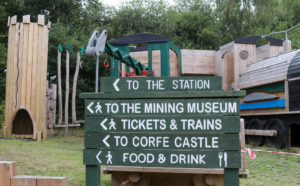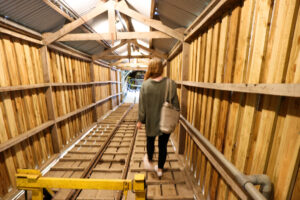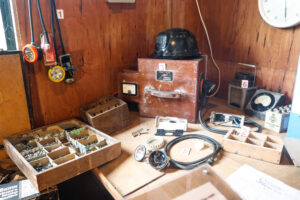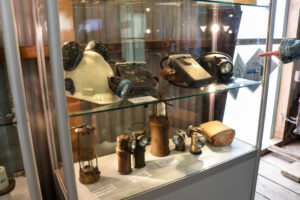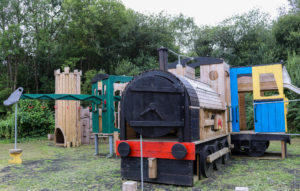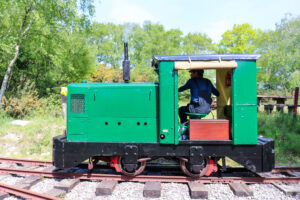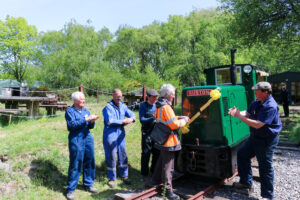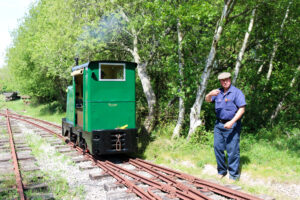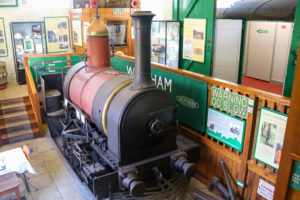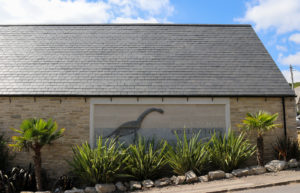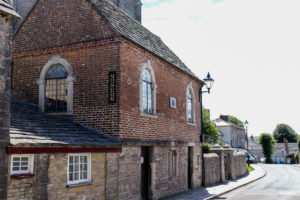A hidden historical gem in the heart of Purbeck, this is a truly local museum. Telling the story of the area’s ball clay industry, it’s a fascinating way to tunnel into the Isle of Purbeck’s past and learn how industrious clay miners were here, right back to the 17th Century.
The Purbeck Mineral & Mining Museum is an interesting little place to stop if you’re having a day out on the Swanage Railway or parking at Norden Station for other nearby attractions.
The museum is partially housed in an underground mine once used here in Purbeck and is a little hidden gem perfect for an explore while you’re in or passing Corfe, or waiting for your train to Swanage.
Grab a snack from the refreshments hut located just by the car park and let the kids reimagine the railways of the past at the play area outside the museum, complete with train-themed climbing frames and equipment.
You might also be interested in the Swanage Railway Museum, just down the road at Corfe Castle station, where the mining museum looks after the locomotive Secundus housed there.
History
The mining of clay was an important industry in Purbeck as far back as the 1600s – the strong, white ball clay, able to withstand high temperatures, was popular for making clay pipes for tobacco, and other ceramics.
In the 18th Century the famous Josiah Wedgewood began to order large amounts for use in his potteries, creating teapots, cups and saucers for some of the finest homes in the country at the time.
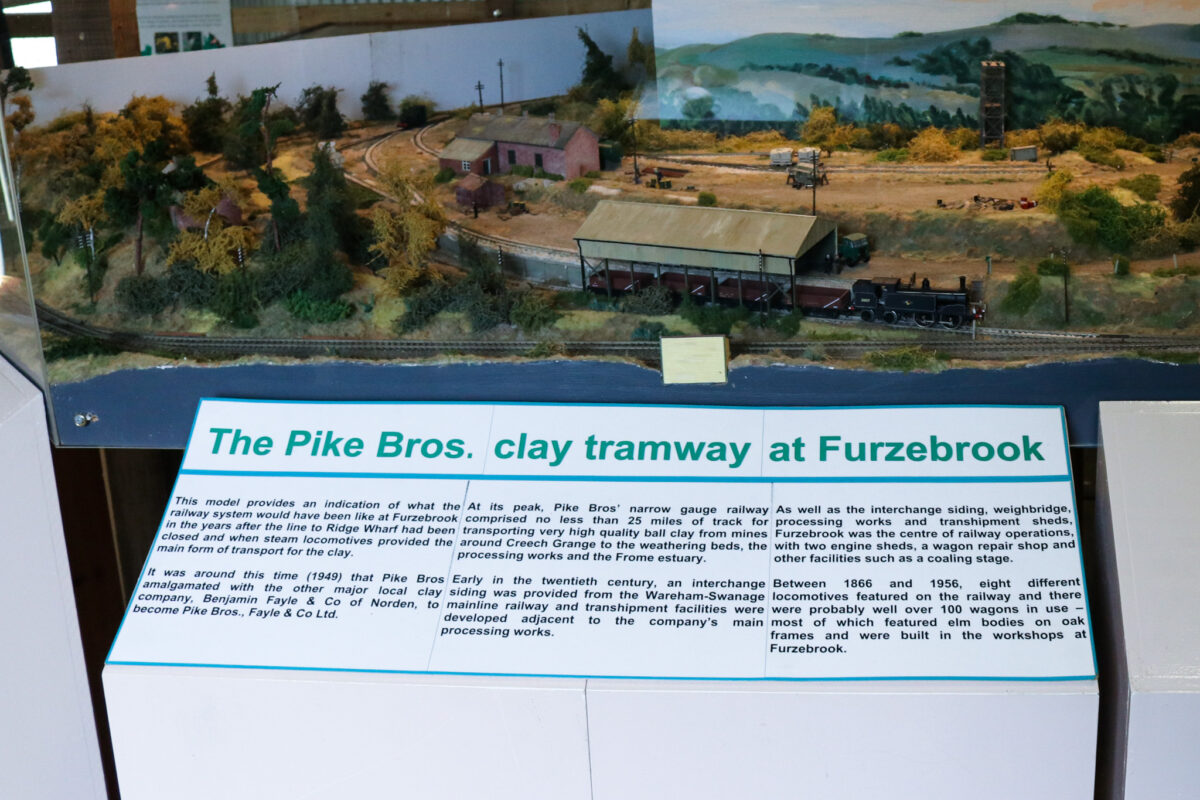
The clay mining industry in Purbeck grew in the 19th Century, leading to the construction of Dorset’s first railway. This tramway was initially used by horses, which would transport the clay by pulling carts toward Poole Harbour, for onward shipment to London.

This gave rise to a network of mines and narrow gauge rail tracks being built in the area, and in the 1860s the first steam locomotive came to Purbeck.
The boom in this local industry in the late 18th Century was good news for people living in nearby Corfe Castle and other surrounding villages, who gained employment through ball clay mining for many years. Later generations then went to work on the Swanage Railway.
You’ll find various items at the museum, which will bring the past of this area to life – from the equipment used by miners to the narrow gauge railway lines themselves.
Swanage’s ‘Littlest Loco’ unveiled at the 2022 Railway Diesel Gala
Swanage Railway’s smallest, recently-restored diesel locomotive was welcomed back into service at a special ribbon-cutting ceremony at the railway’s bi-annual diesel gala & beer festival.
The Ruston then had the important job over the gala weekend of operating demonstration ball clay trains on the museum’s narrow gauge line, adjacent to Norden Station, bringing a little piece of railway history to life.
The narrow gauge 1956 Ruston and Hornsby 48DL industrial diesel locomotive No. 283871 cost £12,000 to restore, which was painstakingly undertaken over the course of three years.
One of the Ruston’s main donors had the honour of cutting the ribbon at the intimate ceremony attended by members of the Swanage Railway Trust and local press.
Volunteering
The museum relies on donations and volunteer support as part of charity the Swanage Railway Trust.
If you are interested in getting involved in volunteering at the museum, check out the information on the museums website: purbeckminingmuseum.org/join-us/ or get in touch by phone: 01929 408490
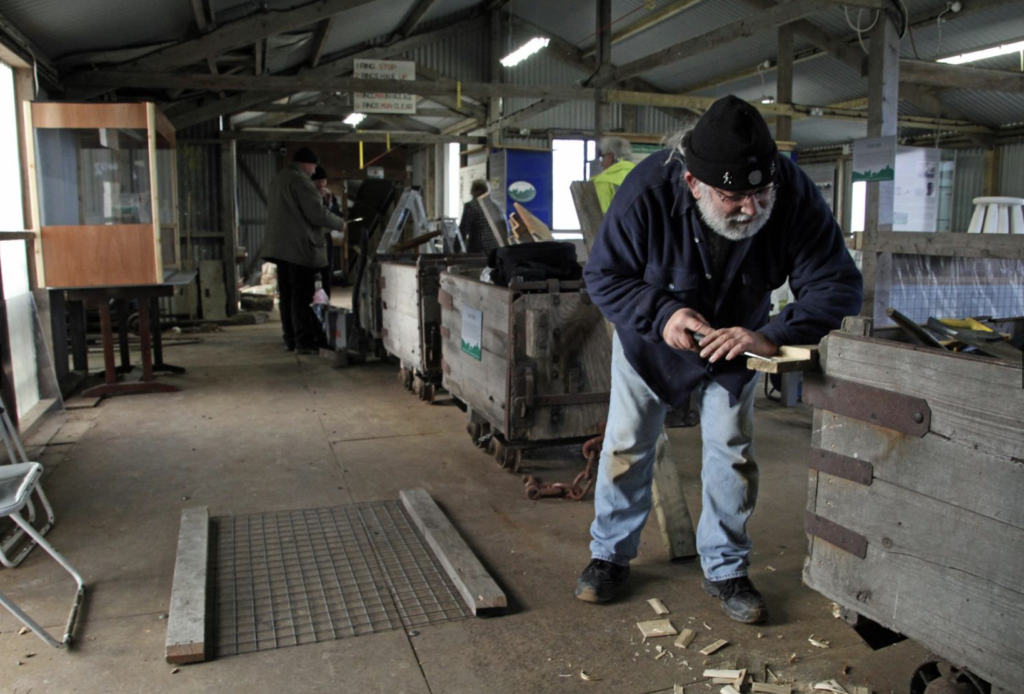
Opening hours
Opening times for the Purbeck Mineral & Mining Museum may vary. For the most up to date opening hours and forthcoming events check the museum’s Facebook page: www.facebook.com/purbeckmineralandminingmuseum
Entrance to the museum is free, with a suggested minimum £2 donation.
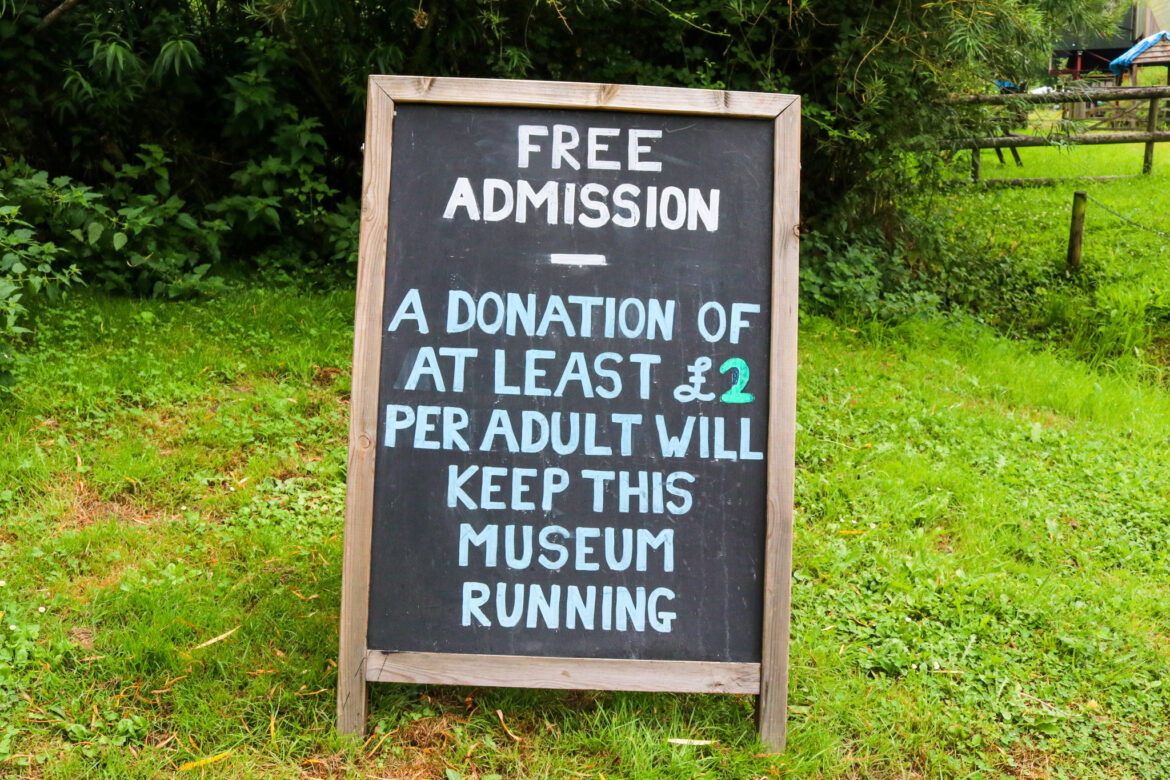
Contact details
Explore the museum’s history further on its website, or call to get in touch to check the latest opening hours:
ℹ️ purbeckminingmuseum.org/about-us/
📞 01929 481461
Directions and parking
Postcode for your SatNav: BH20 5DW
Located just outside Corfe Castle and right next to Norden train station, the museum is just off the A351 – simply follow the signs off the Norden roundabout.
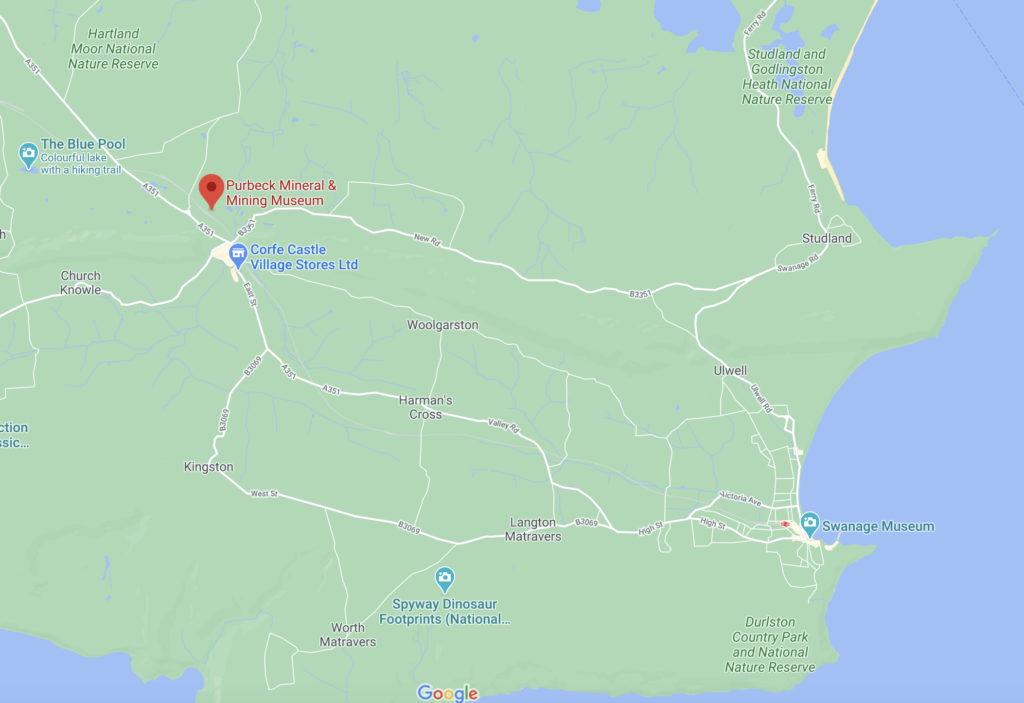
Parking
There is a large pay-and-display car park at Norden station, which also serves the museum.
Purbeck Park car park also has toilet and baby changing facilities.
Nearby museums to explore
- Swanage Railway Museum – Based at Corfe Castle station, the railway museum is a great way to explore the history of this much-loved heritage line
- Swanage Museum & Heritage Centre – Located in the centre of Swanage town, the small museum showcases the area’s vibrant history and fascinating Jurassic Coast geology
- Square and Compass Museum – Tucked in the back of the Square and Compass pub in Worth Matravers is an intriguing display of locally-collected fossils
- The Etches Collection – Kimmeridge’s fossil museum has grown up around the personal collection of Dr Steve Etches – an essential dinosaur-themed stop on your visit to the bay
- Corfe Castle Museum – One of the tiniest museums you’ll ever come across, but a must-see attraction on your tour of this pretty Purbeck village
- Wareham Town Museum – Right in the heart of the Saxon market town of Wareham is a small museum dedicated to the rich history of the area
- The Tank Museum – Just outside Wareham, in Bovington, is the Tank Museum – home to a world-renowned collection of tanks





